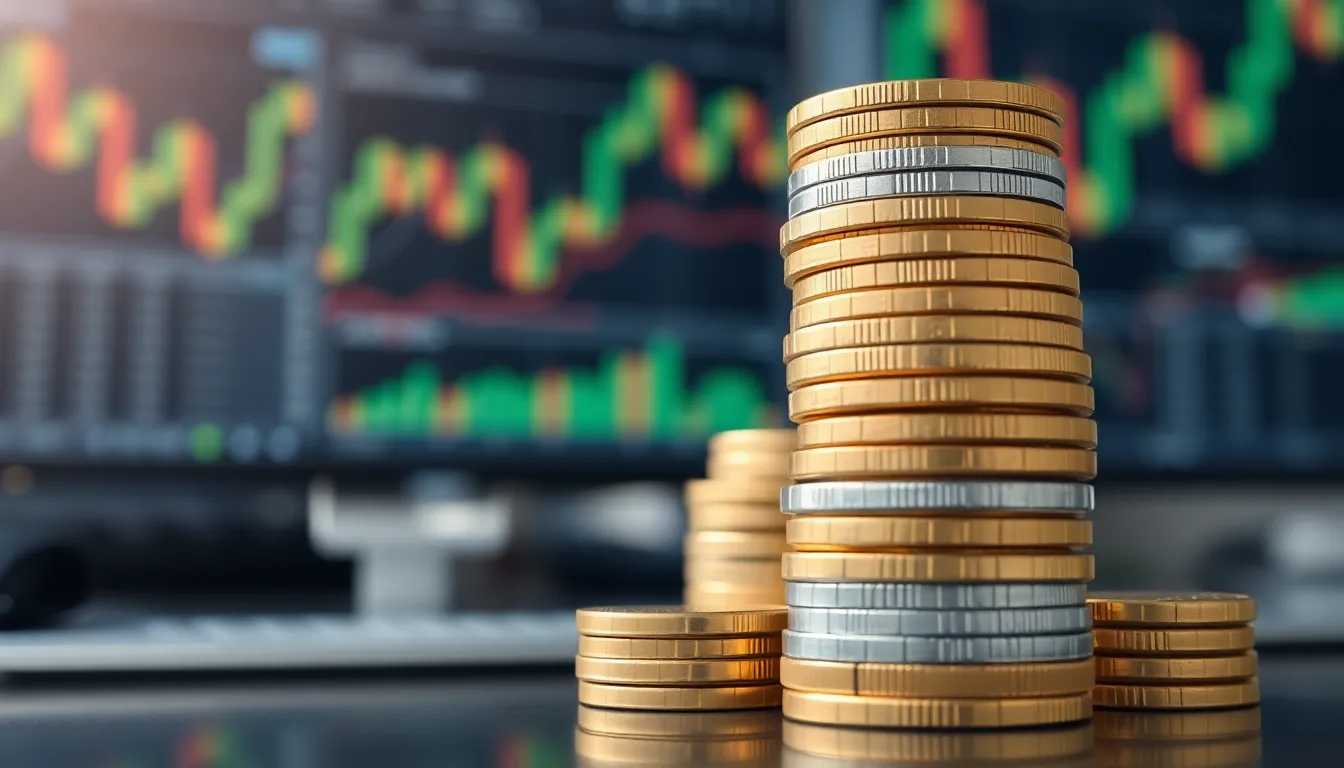In a world where stocks can be as unpredictable as a cat on a hot tin roof, commodities investing offers a refreshing alternative. Picture this: while your friends are sweating bullets over tech stocks, you’re casually sipping coffee, knowing your investments are tied to tangible assets like gold, oil, and agricultural products. It’s like having a safety net made of solid gold—and who wouldn’t want that?
Table of Contents
ToggleWhat Is Commodities Investing?
Commodities investing involves purchasing physical goods like metals, energy sources, and agricultural products. Investors buy these tangible assets to gain exposure to price movements in the global market. Commodities serve as a hedge against inflation, as their values often rise when currencies weaken.
Various types of commodities exist, including precious metals, energy resources, and soft commodities. Precious metals like gold and silver attract investors seeking safety during economic uncertainty. Energy products such as crude oil and natural gas appeal to those interested in global energy dynamics. Soft commodities encompass agricultural products like corn, wheat, and coffee, offering opportunities tied to weather conditions and seasonal trends.
Investors can access commodities through different methods. Physical ownership allows for direct purchase of commodities like gold bullion. Futures contracts provide leverage but carry higher risk, as they commit investors to buy or sell at predetermined prices. ETFs designed for commodities enable traders to invest without handling physical assets.
Market demand significantly influences commodity prices. Supply shortages or geopolitical events can lead to price increases, while excessive supply can drive prices down. Understanding these market dynamics is vital for investors aiming to navigate the commodities landscape effectively.
Commodities investing provides diversification in an investment portfolio. By balancing stocks and bonds with commodities, investors can reduce overall risk and potentially enhance returns. This investment type offers stability and acts as a safeguard against stock market volatility, leading many to incorporate it into their financial strategies.
Types of Commodities

Commodities fall into two main categories: hard and soft. Each type offers unique investment opportunities reflecting different market dynamics.
Hard Commodities
Hard commodities include natural resources extracted or mined. Examples consist of precious metals like gold and silver, as well as energy resources such as crude oil and natural gas. These commodities often act as safe havens during economic uncertainty, leading investors to flock to them in times of distress. Commodity prices typically depend on supply and demand factors, geopolitical stability, and currency fluctuations. For instance, increased global demand for oil can drive prices up, benefiting investors holding these assets.
Soft Commodities
Soft commodities originate from agricultural products or livestock. This category encompasses items like wheat, corn, soybeans, and coffee. These items exhibit seasonal price variations influenced by weather patterns, crop yields, and changes in consumer preferences. Investors often seek exposure to soft commodities when inflation rises, as these assets can retain value amid currency devaluation. Understanding agricultural cycles and market trends proves essential for those interested in investing in soft commodities, as conditions can significantly impact potential returns.
Benefits of Commodities Investing
Commodities investing offers distinct advantages, enhancing investment portfolios and managing risks effectively.
Diversification
Diversification stands out as a primary benefit of commodities investing. By including commodities in an investment portfolio, investors reduce risk exposure to traditional markets. Commodities often move differently from stocks and bonds, which helps balance overall market fluctuations. For instance, during stock market downturns, commodities like gold and oil may retain or increase their value. Investors may find that combining various asset types, including precious metals, energy resources, and agricultural products, leads to more stable returns. This approach enables investors to tap into different sectors, mitigating potential losses from underperforming assets.
Inflation Hedge
Investors often view commodities as a reliable inflation hedge. When inflation rises, purchasing power decreases, eroding the value of cash. Commodities tend to maintain or increase their value during inflationary periods. For example, agricultural products or precious metals often see price surges as currency strength declines. Gold, in particular, is a well-known safe haven during economic uncertainty, often rising when times get tough. Commodities not only provide financial protection but also enhance a portfolio’s resilience against fluctuating economic conditions. This characteristic makes commodities an attractive choice for those seeking stability amid rising inflation rates.
Risks of Commodities Investing
Commodities investing carries inherent risks. Understanding these risks allows investors to make informed decisions.
Volatility
Volatility significantly affects commodity prices. Prices can fluctuate widely due to supply and demand changes, geopolitical issues, and natural disasters. For instance, oil prices may surge during conflicts in oil-producing regions. Investors often experience price swings that may lead to substantial gains or losses. Such rapid changes can create a challenging environment for risk-averse individuals. Managing this volatility requires careful market analysis and risk mitigation strategies.
Market Exposure
Market exposure presents another crucial risk in commodities investing. Investors often depend on global economic conditions, seasonal trends, and currency fluctuations. Commodities can be sensitive to changes in international demand. For example, agricultural products may face price pressures from climate conditions affecting crop yields. Additionally, currency depreciation can impact the prices of imported commodities. Understanding market dynamics is essential for navigating these exposures effectively. Investors who grasp these factors can better position themselves for potential market shifts.
How to Get Started with Commodities Investing
Starting commodities investing involves careful planning and informed decision-making. Engaging in research and analysis is crucial for understanding market trends and price movements.
Research and Analysis
Investors should examine historical data to identify patterns in commodity prices. Analyzing supply and demand helps predict future price shifts. Seasonal trends significantly influence agricultural products; thus, staying updated with weather forecasts and crop reports is important. Online resources offer valuable insights into market dynamics and global events that impact commodity prices. Utilizing tools like technical analysis can aid in making informed investment decisions. Understanding macroeconomic indicators, such as inflation rates and interest rates, also proves beneficial.
Investment Platforms
Selecting the right investment platform plays a vital role in commodities trading. Brokerage firms offer various options for trading. Some platforms provide access to futures contracts, while others focus on ETFs. Researching commission structures and fees helps in determining the most cost-effective solution. User-friendly interfaces enable investors to execute trades efficiently. Mobile trading applications offer convenience for on-the-go access. Taking time to review platform reputations and customer feedback enhances the chance of a successful investment experience.
Investing in commodities offers a unique opportunity for individuals seeking stability and diversification in their portfolios. By incorporating tangible assets like precious metals and agricultural products, investors can hedge against inflation and reduce their overall risk.
While the potential for volatility exists, understanding market dynamics and conducting thorough research can empower investors to navigate the complexities of commodities. With various methods available for accessing these assets, including futures contracts and ETFs, there’s a pathway for everyone, regardless of investment experience.
Ultimately, commodities investing stands as a valuable strategy for those looking to enhance their financial resilience in an ever-changing economic landscape.




